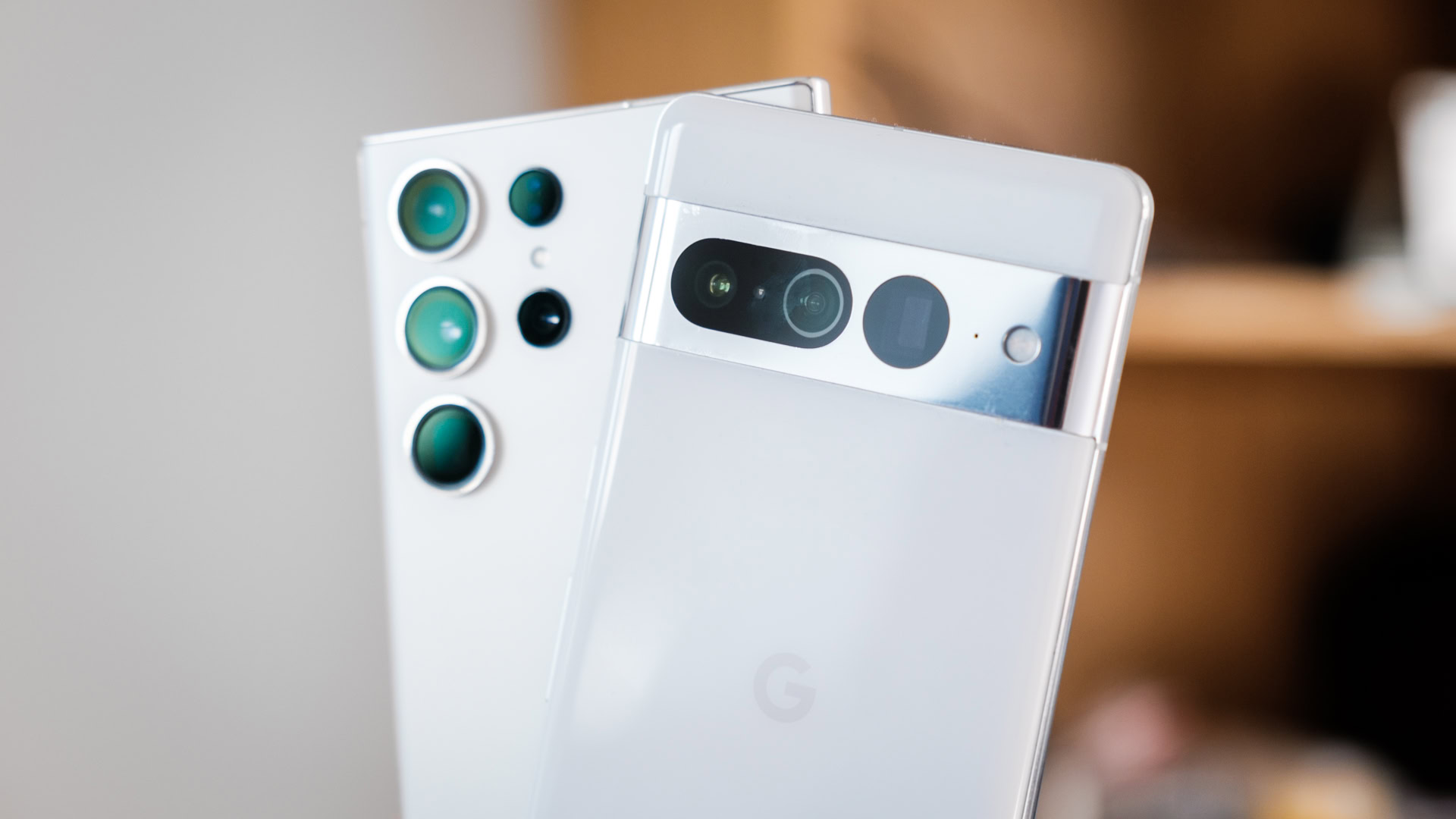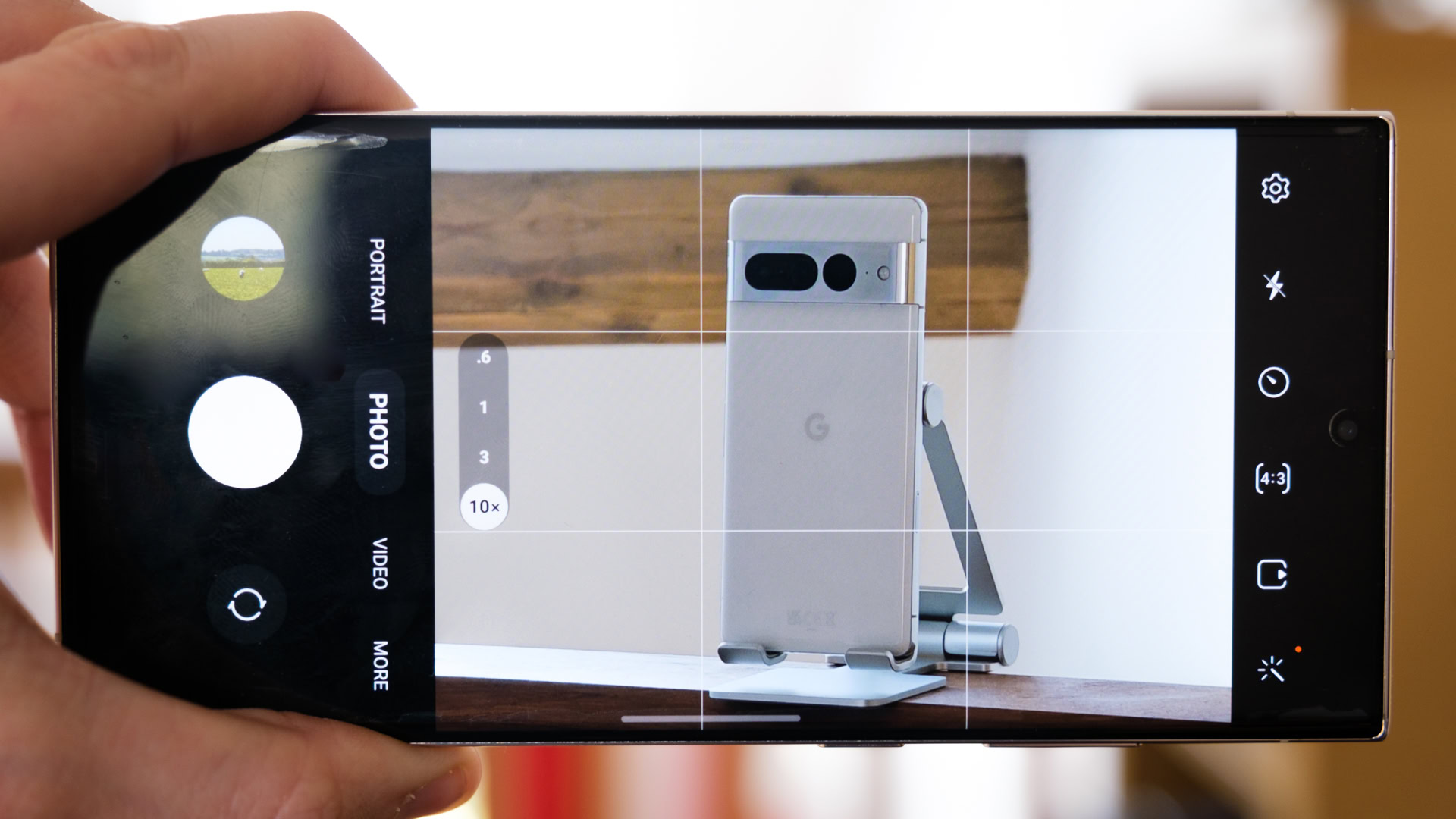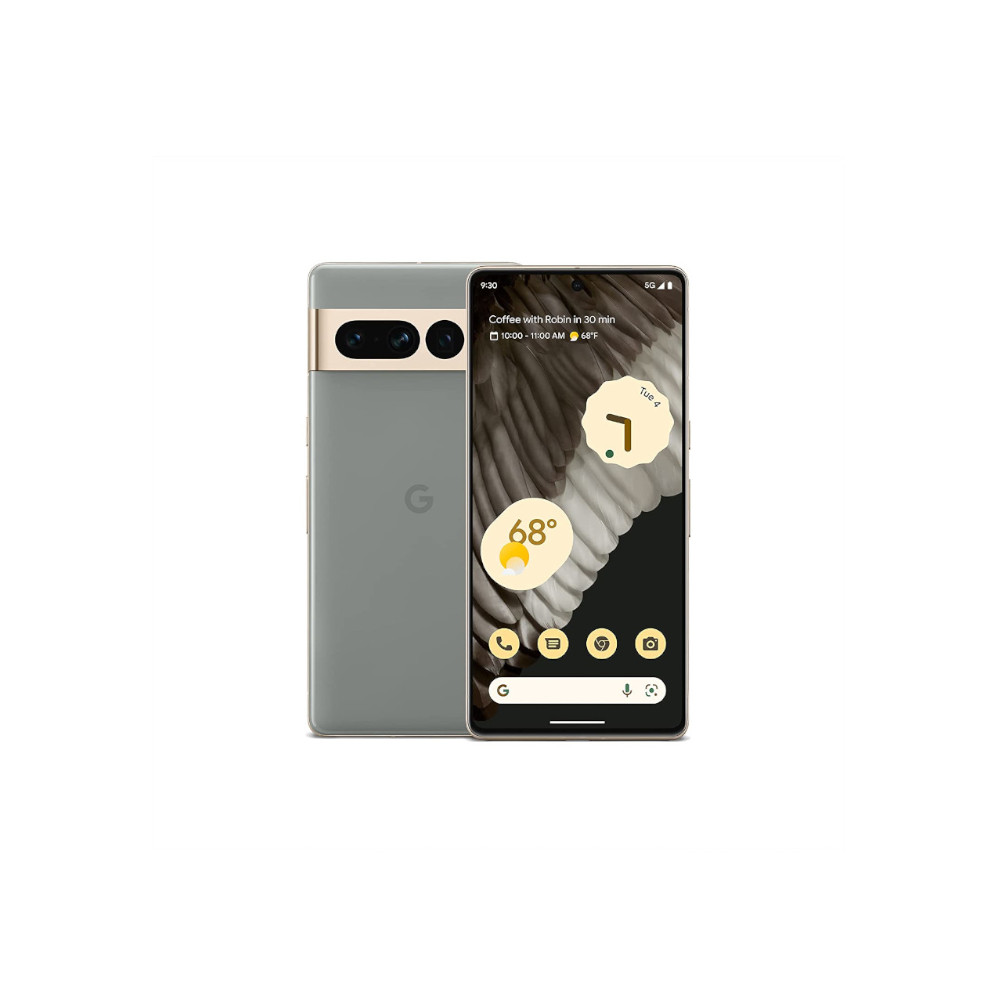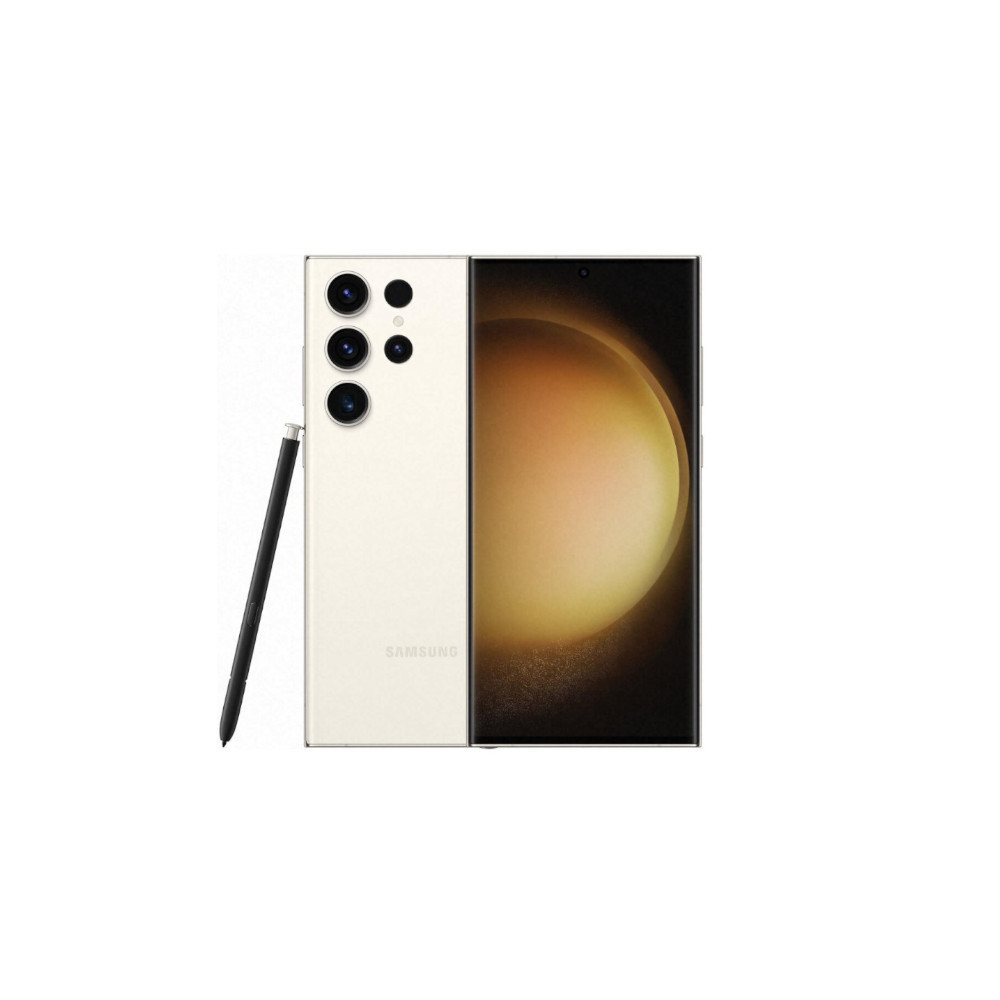Affiliate links on Android Authority may earn us a commission. Learn more.
Google Pixel 7 Pro vs Samsung Galaxy S23 Ultra: Battle of the camera zooms

The Samsung Galaxy S23 Ultra and Google Pixel 7 Pro are two solid choices for the best camera phone around. Despite the different photography hardware and software solutions, both take very good pictures in most environments.
We’ve already compared these two handsets in broad strokes, but it’s worth a closer look at the latest zoom packages onboard in closer detail. Zoom photography is, after all, one of the bigger differentiators and areas of innovation when comparing smartphones.
Modern zoom techniques under the microscope
Before taking a look at some snaps, here is a little background on why the zoom capabilities of these two phones are particularly interesting.
Google debuted its advanced Super Res Zoom technology with the Pixel 7 Pro, which has a couple of interesting properties. First, the primary and 5x periscope cameras produce “lossless” zoom snaps at 2x and 10x, respectively, by cropping a 12MP snap from the unbinned 48MP sensors, extending the phone’s reach without unsightly digital upscaling. In other words, the Pixel 7 Pro uses just two lenses to cover four zoom ranges (1x, 2x, 5x, and 10x). The drawback is that the focal length doesn’t change with pixel binning turned on and off, so you don’t get quite the same background compression and bokeh as a true optical zoom.
Secondly, when digital upscaling is required between 1x and 5x, Super Res Zoom pulls in data from the primary and periscope cameras, fusing them together to produce a sharper image. We’ve spotted good results in the past, but it produces a loss of detail at the frame edges where the 1x camera data is digitally upscaled.
By contrast, Samsung’s Galaxy S23 Ultra retains a more traditional hardware-based approach, throwing a 3x telephoto and 10x periscope zoom at the issue. The idea is to cover more focal lengths with true optical zoom quality, relying on more traditional digital upscaling to fill in the smaller gaps between. With 1x, 3x, and 10x optical points, Samsung only has to worry about digital upscaling in the 4x-9x zoom range, and out beyond 10x, of course. The Galaxy S23 Ultra also applies multi-lens image fusion here to help fill in the gaps, at least in some circumstances.
Two different approaches, then, but which one wins? It’s hardware might versus software smarts.
Samsung Galaxy S23 Ultra vs Google Pixel 7 Pro camera samples
To determine which phone offers the superior overall zoom package, we will go through pictures at every zoom interval, starting at 2x right out to 10x. As always, you can follow along with your own analysis with the full-res image samples in this Google Drive Folder.
2x zoom
2x isn’t far from the starting blocks. Still, the move to un-binned pixels with the Pixel 7 Pro versus the more familiar digital upscaling used by the Galaxy S23 Ultra already presents an interesting point of comparison already. Do smaller pixels produce better results than upscaling larger pixels? The answer is: it depends.
There’s not much in it at full frame (both photos look very good), but look closer and the Pixel 7 Pro extracts better fine detail in good lighting than the S23 Ultra at 2x. Unlike the Galaxy, there’s less sign of over-sharpening and a far more natural look to the pictures. This is disappointing for the S23 Ultra, given its larger 200MP primary sensor capable of its own 50MP and 12.5MP binning modes. It feels like a waste that Samsung doesn’t use these extreme megapixel counts to provide sharper 2x snaps in a similar vein to Google’s flagship.
On that note, the noise level on the Pixel 7 Pro does creep up in dimmer light, owing to those smaller pixels, but still, the level of detail remains surprisingly comparable. The only real drawback is that the Pixel 7 Pro’s dynamic range and color balance also suffer somewhat in low light. Still, that appears to be a worthwhile trade-off for better-looking 2x daylight snaps.
3x zoom
With a dedicated telephoto zoom lens at 3x, intuition suggests that Samsung will take an early lead at the 3x zoom level, but that’s not entirely the case either. Again, there doesn’t appear to be anything between the two when looking at full-frame, aside from typical changes to color and white balance exposure. Looking at the closer details showcases how Google’s Super Res Zoom works and what pros/cons it has for zoom levels in between optical lens ranges.
Samsung’s classic zoom implementation is the most consistent in terms of detail, whether you’re looking at the frame center or edges. However, the small 1/3.52-inch sensor struggles with noise in this HDR scene, resulting in a level of grain and the need for a dose of resharpening that takes the shine off the image. One consistent criticism of Samsung’s zoom package is that the level of detail isn’t all that great, even at optical zoom levels.
Pulling data in from the main and large-ish 1/2.55-inch 5x telephoto results in a lower noise level and compatible, if not superior, details in the center of the Pixel 7 Pro’s 3x image. However, the trade-off comes in the outer thirds of the picture, where there’s no data from the 5x to use. Details here are upscaled from the 1x main camera, with a clear reduction in clarity that’s notably inferior to the center of the snap and a standard zoom implementation. The result is OK overall, especially for pictures with the subject framed in the center or macro shots with less distant detail, but Google’s technology obviously isn’t as good as a dedicated optical zoom lens can be.
4x zoom
Moving beyond optical zoom levels, any advantage Samsung had at 3x zoom disappears. With more of the lens covered by the 5x zoom field of view, the Pixel 7 Pro exhibits less of the edge smudging we saw in its 3x snap. There’s also very little denoise and sharpening, producing another clean-looking picture. The biggest downside of using the Pixel at 4x is focusing. The periscope zoom can’t always focus on nearer objects, so it occasionally focuses on something ever so slightly behind the subject you want. Thankfully this only occurs in specific instances.
At the same time, pushing to 4x slightly reduces the level of detail available from Samsung’s 3x telephoto camera, causing the gap with the Pixel to close further still. Paired with the more aggressive post-processing pass and the far higher level of noise, it’s often very difficult to pick a clear winner between these two cameras when shooting at 4x. Both have their pros and cons, but once again, the Pixel does surprisingly well with less hardware.
5x zoom
While the Galaxy S23 Ultra relies on digital upscaling from its telephoto camera at 5x, we expect the Pixel 7 Pro to take a more noticeable lead. The S23 Ultra still looks passable at full frame, especially in terms of exposure and color. But Samsung’s zoom looks increasingly oversharp at these longer ranges compared to the more natural appearance of the Pixel 7 Pro.
As the above examples show, there’s no competition for the Pixel 7 Pro at 5x once you take anything approaching a close look at finer details. Optical zoom far surpasses Samsung’s digital upscaling, which appears basic in its technology compared to Google’s Super Res Zoom. There’s no sign of data from the 10x lens, for example, to improve details at the center of the scene.
Beyond 5x
With both phones firmly relying on software upscaling beyond 5x, you might think it’s a home run for the Pixel 7 Pro from here on out (at least until 10x). That is pretty much the story here, so we won’t dwell on that too much. However, in the right circumstances, the Galaxy S23 Ultra uses image fusion of its own, pulling in data from the 10x camera to enhance it’s the quality of its intermediate zoom images.
This feature appears to be lighting and focus-dependent and works best at 8x and 9x, as demonstrated below. Sadly activation is very hit-and-miss; I had the most luck toggling zoom up to 10x to activate the camera and then lowering the zoom back down.
The result is clearly much improved, with superior detail capture and far less digital cleanup required. It’s not perfect, though; you can easily see where Samsung’s camera has and hasn’t applied the 10x image data across the text. It seems crude edge or object detection plays a part in this implementation, which may be why it’s not always used. Still, this technique results in snaps that, at a glance, come closer to matching the Pixel’s longer-range zoom capabilities.
However, the finicky nature of Samsung’s better zoom algorithm meant most of the 6x to 9x zoom snaps we took with the Galaxy S23 Ultra were clearly inferior to the Google Pixel 7 Pro. Not only in terms of fine detail capture, but also general appearance, due to the S23 Ultra’s reliance on sharpening and image cleanup. The Pixel 7 Pro scores bonus points for natural soft bokeh from its longer focal length too. The phone’s only real weakness at these zoom distances is its slightly darker exposure and overly cool white balance in our outdoor snaps, but its pictures are still clearly much nicer to look at across this entire zoom segment.
10x zoom
With a dedicated 10x periscope camera in tow, intuition suggests that the Galaxy S23 Ultra takes the lead at 10x, and that’s certainly the case on the whole. In good lighting, the phone’s 10x optical camera benefits from a substantially better level of detail than Google’s cropped and, therefore, much smaller sensor area. That said, you have to crop in to really make this out.
There’s definitely a better level of contrast and finer details on display in the S23 Ultra crop. Those telltale signs of oversharpening once again show up, however, which produces a bit of an overly harsh look. Pushing the cameras even further out to 20x confirms Samsung’s lead at long-range photography. The Pixel 7 Pro is far too soft here and lacks dynamic range, having clearly reached the limits of its resolvable resolution from the 5x camera. That being said, the result still isn’t too bad, given the hardware differential.
The above being said, neither phone’s periscope camera is particularly great in very low light. In fact, Samsung’s option doesn’t activate at all in dark conditions, leaving you with a very noisy upscaled image. Thankfully, the lights have to be turned down pretty low before this happens on either phone, so we won’t chalk off any points here.
Samsung Galaxy S23 Ultra vs Google Pixel 7 Pro zoom photography verdict

Despite their pros and cons at certain zoom levels, there’s one obvious winner when looking at all our pictures: the Google Pixel 7 Pro.
Google’s innovative use of pixel binning and image fusion produces a high-quality level of zoom across virtually all intervals between 2x and 10x. Not only does the phone hand in crisp details, but solid color processing and dynamic range hold up well too. The only exception is at 3x, where there’s a noticeable lack of detail at the frame’s edges, and dynamic range eventually struggles when pushing the zoom levels further. But that’s a minor blemish on what is a remarkably consistent experience for a seemingly conservative camera package.
Google’s innovative use of pixel binning and image fusion produces a high-quality zoom.
Samsung’s hardware behemoth only manages to score up wins at 3x, 10x, and beyond, where its optical zoom hardware still outmuscles Google’s smarts. But even here, the results are not as night and day as the hardware might suggest. In between these zoom levels, pictures appear oversharp and undetailed, seldom holding up well on close inspection. Perhaps most disappointing is that the S23 Ultra doesn’t leverage its eye-catching 200-megapixel or 10x zoom hardware to better effect by leveraging similar techniques to Google, OPPO, and others who are moving ahead. Instead, they’re little more than marketing plays.
Despite our critical eye here, the Samsung Galaxy S23 Ultra is still a competent shooter overall and remains the king of long-range zoom, but it’s undoubtedly eyebrow-raising that most of its zoom snaps look worse than a phone that sells for $400 less. Once again, Google’s Pixel 7 Pro is the more consistent camera package, coming out top across the zoom levels you’re most likely to use.

High-quality display
Big battery

Beautiful display
S Pen functionality